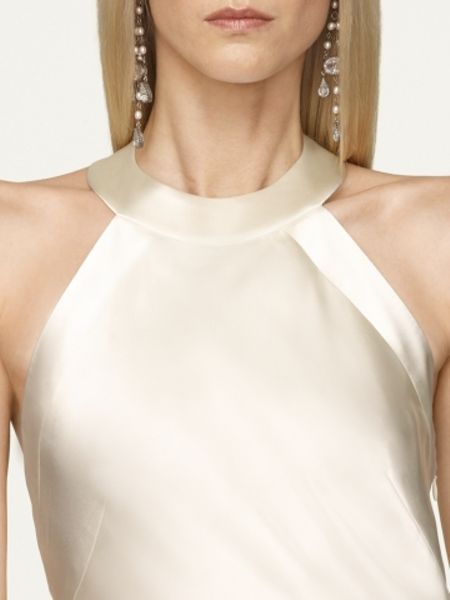Cream Silk Dress Biography
Source(google.com.pk)
Court uniform and dress were required to be worn by those in attendance at the royal Court in the nineteenth and twentieth centuries.
Specifically, Court uniform was worn by those holding particular offices (e.g. in the Government, the Civil Service, the Royal Household, etc.). A range of office-holders was entitled to wear it, with different grades of uniform specified for different grades of official. It is still worn today on state occasions by certain dignitaries both in the UK and abroad.
Court dress, on the other hand, is a stylized form of clothing deriving from fashionable eighteenth-century wear, which was directed to be worn at Court by those not entitled to a Court uniform. For men, it comprises a matching tailcoat and waistcoat, breeches and stockings, lace cuffs and cravat, cocked hat and a sword. For women, a white or cream evening dress is directed to be worn, together with a train and other specified accoutrements. Male court dress is still worn today as part of the formal dress of Judges and Queen's Counsels, and is also worn by certain Lord Mayors, Parliamentary officials, and High Sheriffs of Counties. Female court dress was at one time required wear for debutantes being presented at Court, but it ceased regularly to be worn after the Second World War (when afternoon presentations replaced evening Courts).
Precise descriptions, both of Court Uniform and of Court Dress, were laid down in an official publication called Dress Worn at Court (viewable online) which was published by the Lord Chamberlain's Office.[3] The 1937 edition remains authoritative for those rare circumstances in which Court Uniform or Court Dress are still required.
Court dress (as distinguished from court uniform mentioned in the section below) was worn by all men not entitled to court uniform or military uniform on occasions of state where such were customarily worn. Such occasions are now rare, but formerly they included state balls, evening state parties, courts and levées (Courts were evening occasions at which women were formally presented to the monarch; levées were morning gatherings at which men were presented). It is still worn today, to a very limited extent, in courts of law and by certain parliamentary and other office-holders; the last time it was worn by people in significant numbers was at the Coronation in 1953. It consists of a tail-coat with matching waistcoat and breeches, lace cuffs and jabot, silk stockings, buckled shoes, cocked hat, white gloves and a sword. At one time suits of various colours were to be seen, often with gold or silver embroidery; but (as is generally the case with men's formal dress) black is now the predominant colour, and has been since the nineteenth century.
Peers' robes were worn over normal dress, which gradually became stylised as the court suit. It was only from the late eighteenth century that court dress became fossilised. By the early to mid eighteenth century velvet was largely confined to court dress. Court dress was obligatory in Westminster Abbey for all not wearing official or lordly apparel.
During the seventeenth century, gentlemen's court dress was largely determined by two related influences, the retention of out-dated styles, producing a distinctive form of dress, and an interest in military uniform. The first produced the court suit, a coat with tails, waistcoat and knee breeches, worn with silk stockings, and a formal court sword with a cut-steel hilt and embellishments, and bicorne hat. The court suit has undergone a number of changes since the eighteenth century. However, apart from changes in the cut of the sleeves and shoulders, there was little basic alteration until the third quarter of the nineteenth century.
In the eighteenth century, dress worn at court comprised gold and silver stuff, brocades, velvets and cloth coats. They were always embroidered, and worn with waistcoats generally of a different colour- gold or silver brocade, damask, silk or satin, heavily embroidered or laced in silver or gold. From the 1730s at least cloth was popular for court wear. By the 1780s dress was established as dark cloth or velvet, embroidered in silk or metal, single-breasted silk waistcoat (usually white), with the fronts curved away.









No comments:
Post a Comment